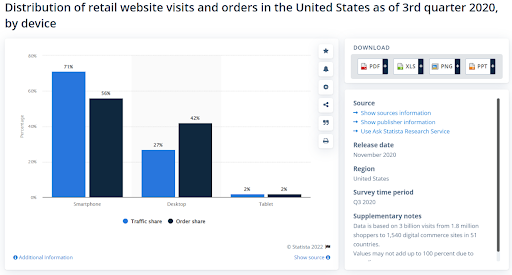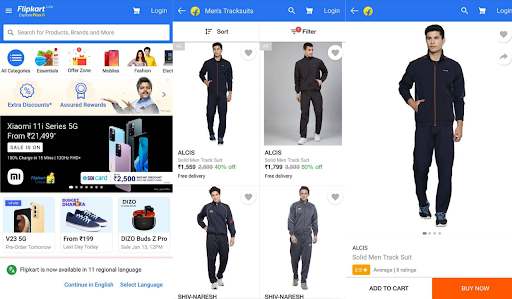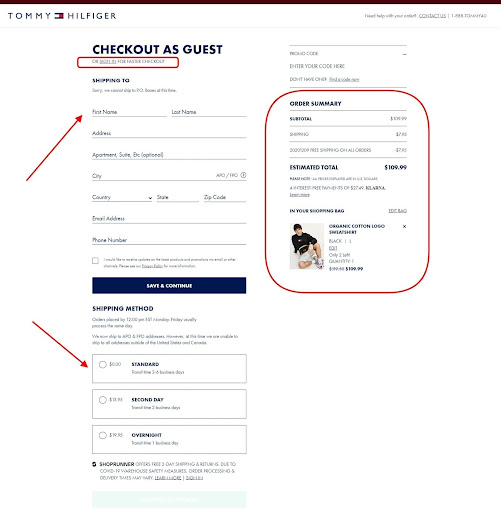You can attract visitors to the website with the help of various tricks. Social media, email marketing, SEM, and other strategies that may come to your mind.
But are all the efforts worth it if the visitors don’t stay on the website? Why do they ignore your pop-ups and calls to action? Why don’t your solutions urge potential clients to fulfill the desired action?
If this action becomes undesirable for your prospects, you should figure out why this happens. One of the possible reasons is neglecting conversion rate optimization (CRO).
The website and the business exist with one goal. And it’s converting people to perform such tasks as:
- subscribing to the email newsletter;
- adding items to the wishlist or cart;
- finishing the order;
- among others.
The conversion rate shows how many visitors do what you expect from them compared to all the website traffic. And your goal is to fine-tune the store to get the maximum of these visitors. This piece will illustrate the three cornerstones of a successful and converting website.
1. Look at the Mobile Version of the Site
The rise of mobile commerce dictates its rules. You can’t have high conversions if you don’t have a decent mobile version of the site.
Statista’s report of the US users shows that 71% of online store visitors access the website through mobile, while it’s only 27% for desktop traffic. 56% of smartphone visits resulted in completed orders, and 42% of desktop users purchased goods.

These numbers indicate that the conversion to visit ratio is still higher for desktops than that of smartphones. Why does it happen?
First of all, smartphones are suitable for on-the-go searches. People may not have time to insert credit card or address data. They just open the store’s pages to compare goods, read reviews, and see what’s in stock. That’s why desktop visitors have more opportunities to complete orders.
The second reason may be that you haven’t properly optimized the website for mobiles. People have to squint or zoom the screen to see critical information, so they either prefer to open the store later from a desktop computer or close the website and never come back. The latter results in soaring bounce rates, another crucial website metric.
Note that Google appreciates the mobile-first approach and ranks mobile-friendly websites better than non-optimized ones.
So here are three things you should do to prepare the store for convenient mobile use.
- Design a responsive website
This way, it’ll adapt to devices of different sizes. The content and layout of the mobile version will look like a smaller desktop variant.
- Build a native app
It creates the best UX/UI for convenient navigation via mobile devices. These apps work fast and are accessible without the Internet. However, it may imply additional costs on development for various OS and the necessity to download a heavy app from the store.
- Create a progressive web app
Users can browse a PWA like a website, but it looks like a native app. So you get the native app benefits (speed, push notifications, offline mode) and use the lightweight app working on different OS.
But note that PWAs don’t have access to the hardware to the native apps’ extent. So some of the functionality won’t be available.
Some CMSs, such as Magento, support PWA development. You can build them from scratch or using Magento PWA Studio or other similar package solutions. Below is the Flipkart website, which is a PWA.

2. Use the On-Site Search Feature
Customers can find what they want faster using intelligent search. Suppose you enter a large marketplace and already know what to look for. But how do you navigate in this variety?
The first thing a retailer should ensure is logical navigation. The pages should lead customers down the sales funnel, have visible calls to action, and provide a well-thought-out layout.
If the store sells many products, connect the search function. Put the search bar at the top of the main page to help visitors go straight where they want instead of sifting through categories.
Let’s discuss how the search function works on the Estee Lauder website. When you click on the search icon, you can see a list of the most popular categories and best-selling products.

Type anything to see that the system doesn’t return only one hundred percent match results, but also those that are close in meaning. It creates more possibilities to convert if you don’t find the desired item.
3. Optimize Checkout Pages
If buyers have spent much time picking and adding products to their shopping carts, they don’t expect any friction with payment. The same applies to inefficient checkout.
It doesn’t just spoil the shopping experience. It means prospects are unlikely to return to your store in the future.
The idea of eCommerce shopping is convenience. Why should you limit customers to certain payment options or wade through a messy checkout? You’ll convert much more visitors if you provide easy ways to locate what they need and the possibility of paying how they want.
Let’s consider the Tommy Hilfiger case in the screenshot below. As you can see, it all goes down to just one page.

The online store allows you to purchase goods without logging in. Ditching the obligatory registration can convert more clients who are pressed for time to sign up on the website.
What’s for the fields, there aren’t too many of them. Some data should be typed in or selected via pickers or droplists.
Notably, alternative payment methods can boost return on ad spend (ROAS) by up to 70% when used for the following purposes:
- social media campaigns;
- email programs;
- retargeting.
Another question you need to ask is whether you can benefit from integrating the online store with mobile payment apps. They include Apple Pay and Amazon Pay.
Wrapping Up
Prioritizing conversion rate optimization ensures a better return on investment. It guarantees that nothing slips through the cracks, and every dollar spent results in more sales. For example, you can see what resonates better with your audience and encourages them to convert.
I’ve outlined three ways to improve conversion rates, but there are many more. And they perform differently depending on the sphere, device, or season when people make purchases.
What do I suggest improving in the first place?
- go mobile-friendly;
- help visitors to discover the needed products with the help of rational navigation and an enhanced on-site search;
- make the checkout process easier.
About the author :

Alex Husar, chief technology officer at Onilab. For over 8 years he’s been working on Magento migration and development projects as well as building progressive web apps (PWAs).
Alex is an expert in full-stack development who shares his expertise and in-depth knowledge on modern technologies and Computer Software Engineering.






